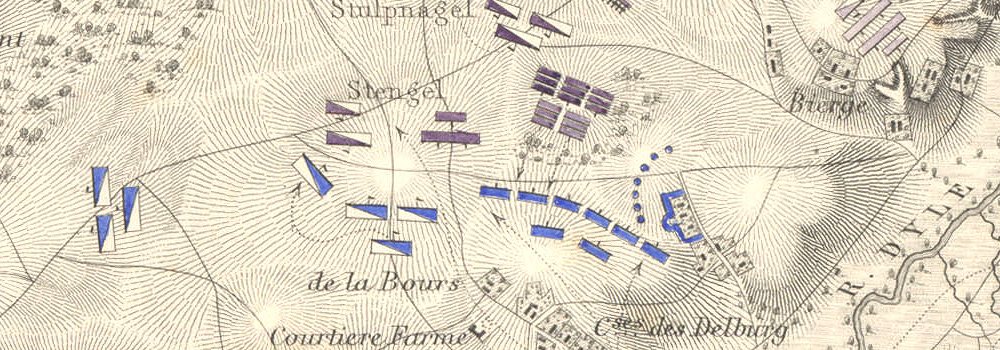La bataille de Landshut eut lieu le 21 avril 1809, entre les armées alliées de France, de Wurtemberg (VIIIe Corps) et de Bavière (VIIe Corps) sous les ordres de Napoléon fortes d'environ 77 000 hommes, et les 36 000 Autrichiens du général Johann von Hiller.
La bataille commença avec la retraite du général Hiller et de ses 36 000 hommes suite à la bataille d'Abensberg. Le commandant des forces françaises, le maréchal Lannes se lança à la poursuite d'Hiller, pensant qu'il pourrait anéantir une grande partie de l'Armée autrichienne. Accompagnant la force sous les ordres du maréchal Lannes, 57 000 hommes sous les ordres du maréchal Masséna se déplacèrent pour intercepter Hiller et l'empêcher de s'échapper. Les Autrichiens, bien que dépassés numériquement, se battirent farouchement jusqu'à l'arrivée de Napoléon Bonaparte, à partir de ce moment, la victoire française ne fit plus de doutes.
Hiller had decided to defend Landshut to allow his baggage train to withdraw. At Landshut the Isar river was spanned by two bridges with a small island in the center. Hiller had positioned cavalry outposts to the north of the town. His main force was deployed in Landshut and to the south on higher ground. Early in the morning Hiller was informed that a French force (57,000 men) had crossed the Isar upstream at Moosburg. Masséna led this force.
Hiller realized that he would be unable to hold his position for long, as Masséna was trying to block him from escaping. At this point his cavalry were forced back by Lannes’s troops and the Austrians were pushed back into Landshut. The French now quickly seized the northern bridge over the river, and the Austrians withdrew into the main part of the town to defend the southern bridge. The Austrians tried to set fire to this second bridge, but owing to the rainfall over the previous days, this was only partially successful. However the Austrians did manage to close the gates at the end of the bridge. The French were now faced with attacking across the smoldering bridge. Napoleon ordered his aide General Georges Mouton (later comte de Lobau) to assume command of the attacking grenadiers of the 17th Line. In the face of heavy Austrian fire from all sides, Mouton ordered his men to attack without firing their muskets. The grenadiers reached the gateway and broke it down, allowing Bavarian troops to quickly reinforce the breach.
The fighting now continued in the streets of Landshut itself. However the French had crossed a bridge immediately to the west of the town and were now entering Landshut from the south.
Many of the defenders were captured, but Hiller was able to retreat with the bulk of his force toward Neumarkt am Wallersee. Landshut finally fell to the French just after noon. The Austrian force had suffered around 10,000 casualties as well as losing 30 cannon, but more importantly they had lost a large number of caissons, a pontoon train, and thousands of supply wagons. The victorious French forces spent much of the afternoon ransacking these supplies.
prendre l'ordre de bataille d'abensberg (jour d'avant) : les grenadiers du 17e régiment d'infanterie (avec mouton) sont dans la 1e division de morand, les bavarois sont dans le 7e corps.
